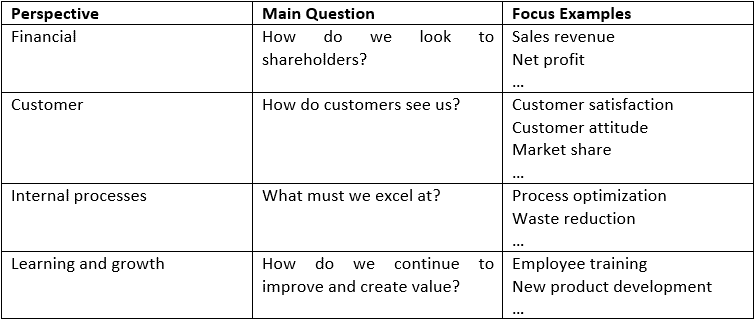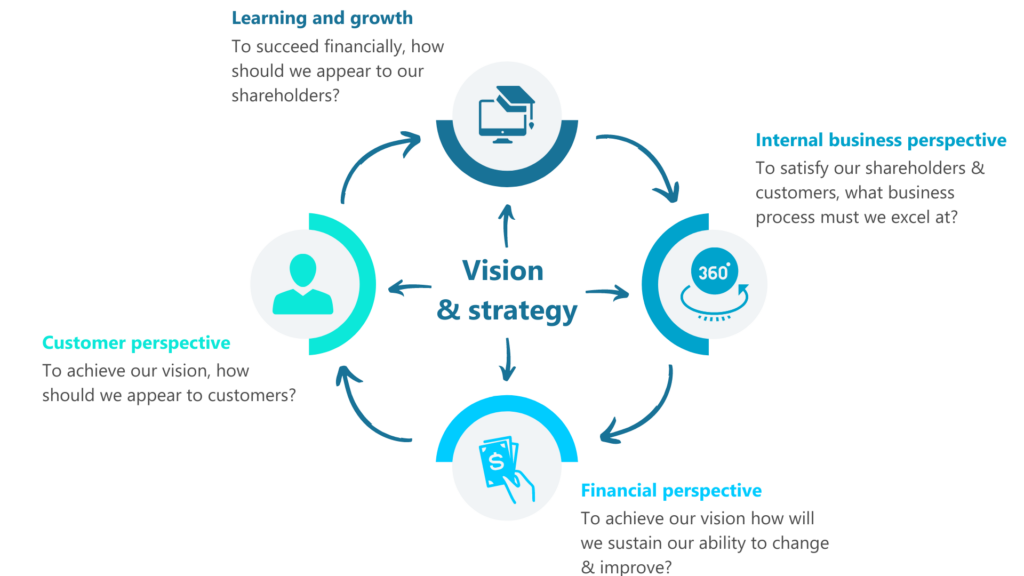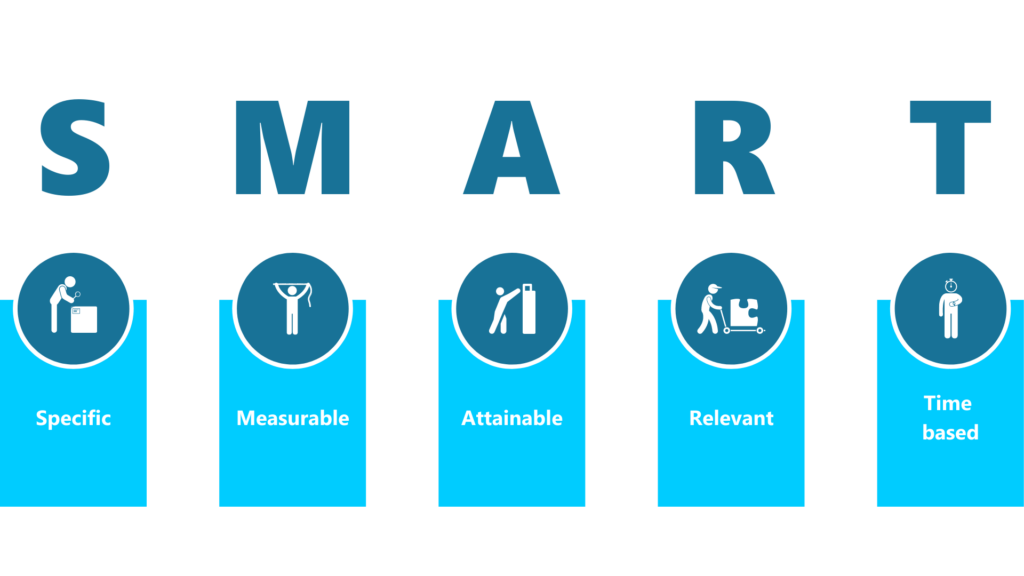What are KPIs
If you have ever constructed a dashboard for your organization, it is inevitable that at some point you had to determine KPIs, or Key Performance Indicators. A KPI is a quantifiable measure used to evaluate the performance of your organization regarding a predetermined objective.
KPIs are important for your organization as they allow you to monitor critical success factors relating to business objectives. In other words, KPIs indicate whether your organization is on the right track to attain business objectives and whether the actions you are taking are effective.
Methodology to get effective strategic KPIs
The real question is how to establish good KPIs and how to make sure to include only the most crucial ones. As the word ‘Key’ indicates: less is more. For different organizations, KPIs will vary. It would be foolish to say that there are 5 KPIs that apply to every organization. Therefore, there is a methodology that can be followed that will help you find appropriate KPIs.
Balanced Scorecard
What you measure is what you get. As the focus of KPIs is often dominated by a financial perspective, you only gain insight into your organization’s financial performance. In order to have a real understanding of the current performance, however, it is important to include other perspectives into your dashboard. The balanced scorecard not only takes into account a financial perspective, but also customers, internal processes and learning and growth perspectives.

As these four perspectives interact, it is crucial to measure their impact. For example, enhancing employee learning can improve internal processes resulting in higher product/service quality, which in turn contributed to better customer attitudes. This ultimately results in better financial performance. In other words, these additional measures are the drivers of future financial performance.
The four different perspectives broaden your knowledge about your organization and deepen your understanding of how financial performance is driven within your organization, while also taking into account the goals and objectives of your organization.

Establish Critical Success Factors (CSF) from your Goals & Objectives
The second step is to identify your Critical Success Factors (CSF) based on the goals and objectives of your organization. CSFs are a limited number of key activities that you should focus on in order to attain your strategic business objectives. To find them, you first take a look at your organization’s strategic objectives and ask yourself the question ‘What do we need to do to attain these objectives?’. Some other questions that might help you:
What do we need to do to be successful in our domain?
What is necessary for our organization to exist?
What are the few things that have to go right, that are vital for our organization?
These answers, your CSFs, are the building blocks for your KPIs.
Establish Key Performance Indicators (KPIs) from your CSF
A CSF needs to be translated into one or more KPIs. A KPI will be the element that will quantify a CSF and let you know if you are on the right track towards your objectives. You should be able to learn a lot about your CSFs and your company’s business model only by looking at them.
Once you think you found a good KPI, that gives a good representation of your objectives, you need to make sure that this KPI is SMART:
Having your strategic KPIs should now help you gather measurement to make sure your organization is going in the right direction.

Examples
If our goal would be to increase sales we look at all different perspectives:
From a financial perspective, revenue is the ultimate KPI. From a process perspective, a critical success factor could be to increase leads so the KPI is an increase of leads (e.g. by 25% over the next 12 months). Another KPI could be the customer conversion rate from visit to lead. This is the percentage of visitors converting to leads.
From a customer perspective, a possible CSF to attain this objective is to increase customer service. Depending on your organization, you can translate this CSF into a KPI in multiple ways. One way may be to shorten First Response Time (FRT). FRT is the time between the first contact made by the customer (e.g., through a chat box) and the moment an agent gives a response. When the FRT is short, customers will feel like their issues are being looked at and be more satisfied with your organization’s customer service. This results in satisfied customers that might buy again or recommend your organization.
Keep in mind these are only some examples of strategic KPIs. KPIs differ between organizations and depend on the objectives, the organization type or market. Every organization should use this methodology according to their way of working. The possibilities are much greater and, moreover, customizable regarding your organization’s strategic focus. After setting up the right KPIs, you will need to make sure these lead to actionable insights. A useful way of doing this is by using guided analytics. We’ve written a whole guide on how guided analytics can help you guide managers in improving performance over here.
Sources
[1] Minit. 5 Critical process performance indicators and how process mining can help you track them.
[2] Unilytics. 5 steps to actionable key performance indicators.
[3] Klipfolio. What is a key performance indicator?
[4] QPR. Process KPI reporting with process mining guide.
[5] HBR. The balanced scorecard — Measures that drive performance.




